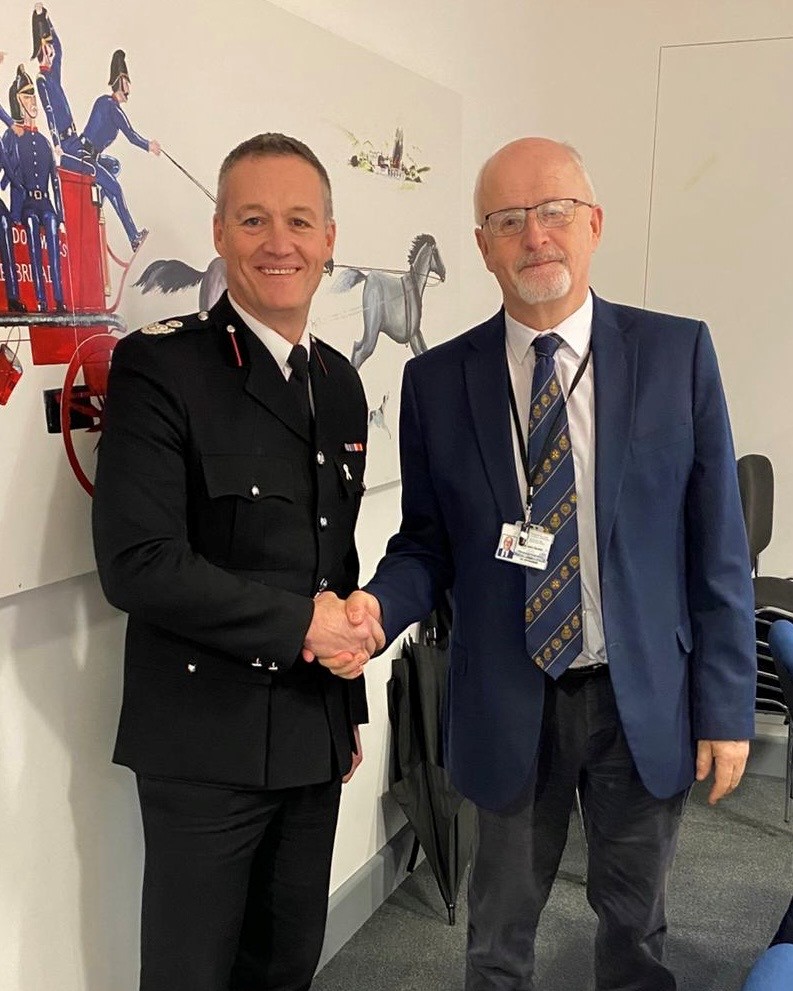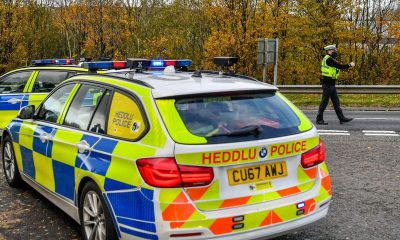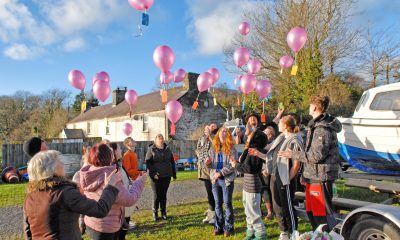News
Inquest concludes a tank barrel flaw was responsible for deaths

A CORONER has reached the conclusion that a fatal explosion in a British Army tank was the result of a design flaw in the gun barrel, allowing highly unstable gases to escape into a tank crew’s turret.
The incident at Castlemartin Range on June 14, 2017, resulted in the deaths of Royal Tank Regiment corporals Matthew Hatfield, 27, and Darren Neilson, 31.
Two others were injured in the blast involving a Challenger 2 tank.
Louise Hunt, the Senior Coroner for Birmingham and Solihull, said the ‘main cause’ was that the gun could still be fired even when a key component, the bolt vent axial (BVA), which prevents 3,000C explosive gases from entering the crew turret, was missing.
She said: “The main cause of this incident was the tank being able to fire without the BVA assembly being present.
“During production and manufacture of the gun, this hazard was not adequately considered or investigated and therefore the ability of the gun to fire without the BVA present … went undetected.”
Ms Hunt went on to add that there were ‘other issues which contributed to the incident’, citing a lack of written procedures regarding equipment drills and communication, specifically the handing over of vehicles to new crews and the handling of the BVA.
These conclusions were reached following a lengthy inquest detailing the events.
It had previously been heard how the air-tight BVA was not in place at the time of the fatal blast. The inquest also found that there had not been a set procedure to check for said equipment, as well as an unknown flaw in the system which allowed the gun to fire without the BVA in place. Four high explosive ammunition bags, referred to as ‘bag charges’, which are used to propel the shell when firing, were found to be ‘incorrectly stowed’.
The Coroner concluded: “Failure to correctly stow charges caused a secondary explosion following failure of the breech block due to the absence of the BVA assembly, and the practice of un-stowed charges was routine.”
Ms Hunt heard several soldiers provide evidence that charges were sometimes stored outside of the heat-proof storage bins within the turret, notably referring to storage ‘on a soldier’s lap’.
Tank Commander that day was Cpl Darren Neilson, a father-of-one from Preston, Lancashire. He was thrown from the turret during the blast, while Cpl Hatfield, also a father, from Amesbury, Wiltshire, was loading ammunition. Both were evacuated from the scene of the blast, but died later of the injuries sustained.
The other two passengers, Warrant Officer Stuart Lawson and Trooper Michael Warren, were injured but survived.
Cpls Neilson and Hatfield were both highly-trained gunnery instructors that had served with the Royal Tank Regiment in Tidworth, Wiltshire, as well as seeing active combat experience in Iraq and Afghanistan. They had taken WO Lawson for a ‘guest shoot’, as he had asked permission to go out and fire a tank.
Yet the inquest heard, that according to Army rules, the Royal Tank Regiment Commanding Officer Lt Col Simon Ridgway was supposed to have written authorisation from a more senior officer for the guest shoot, but he told the coroner that he ‘had not appreciated that at the time’.
Lt Col Ridgway also ‘failed’ to recognise a culture incorrectly storing high explosive charges in the tank turrets. When asked if the incident represented a failure of his leadership during his evidence, Lt Col Ridgway, a veteran of Iraq, said: “I think I failed to identify it was happening. I’m not sure it’s a failure of leadership.
“I have to admit I sort of felt physically sick when I heard people were stowing them out of the bins.
“If for one moment I suspected they were storing them incorrectly, I would have been furious.”
The inquest went on to hear that Lt Col Ridgway didn’t know that the ‘guest shoot’ was happening that day, and so had not passed down his order for WO Lawson to ‘sit on his hands’, and make sure to leave firing to the tank commander.
The inquest found that a basic whiteboard was used to assign crews and tank activities, but it was not routinely updated. The Army said that drill sand training procedure has been updated since the blast.
A report containing three recommendations has been sent out to the Ministry of Defence and BAE Systems, which had designed and constructed the main battle tank of the Army, with the aim of preventing further accidents.
Community
Craig Flannery appointed as new Chief Fire Officer

MID AND WEST WALES FIRE SERVICE LEADERSHIP CHANGE
MID and West Wales Fire and Rescue Service has announced the appointment of Craig Flannery as its new Chief Fire Officer, with effect from Monday, December 15, 2025.
Mr Flannery has served with the Service for more than twenty years, progressing through a wide range of middle management and senior leadership roles across both operational and non-operational departments.
During his career, he has been closely involved in strengthening operational delivery, risk management and organisational development. His work has included leading innovation in learning and development, overseeing the Service’s On-Call Improvement Programme, and driving investment in key enabling functions such as workforce development and information and communication technology.

The appointment followed a rigorous, multi-stage recruitment process led by Mid and West Wales Fire and Rescue Authority. Candidates were assessed through structured interviews, strategic leadership exercises and scenario-based assessments designed to test operational judgement, organisational vision and the ability to lead a modern fire and rescue service.
External professional assessors were also engaged to provide independent scrutiny, ensuring the process met high standards of fairness, transparency and challenge.
Mr Flannery emerged as the strongest candidate, demonstrating clear strategic leadership capability, detailed organisational knowledge and a strong commitment to community safety and service improvement.
Councillor John Davies, Chair of Mid and West Wales Fire and Rescue Authority, said: “Craig brings a deep understanding of our Service and a clear vision for its future. His appointment will strengthen our ability to innovate, support our workforce and deliver high-quality protection for the communities we serve.
“As we navigate a rapidly changing landscape, Craig’s experience in driving innovation and organisational development will be invaluable in helping us adapt and transform for the future.”
Commenting on his appointment, Mr Flannery said: “It is a privilege to lead this outstanding Service. I am committed to supporting our people, strengthening partnerships and building on the strong foundations already in place.
“As the challenges facing fire and rescue services continue to evolve, we must modernise and innovate, ensuring we have the skills, technology and capability needed to meet the needs of our communities. I look forward to working with colleagues and partners across Mid and West Wales to deliver a resilient, progressive Service that keeps people safe and places our staff at the heart of everything we do.”
Health
Resident doctors in Wales vote to accept new contract

RESIDENT doctors across Wales have voted to accept a new contract, with 83% of those who took part in a referendum backing the agreement, according to BMA Cymru Wales.
The contract includes a four per cent additional investment in the resident doctor workforce and introduces a range of reforms aimed at improving training conditions, wellbeing and long-term workforce sustainability within NHS Wales. The BMA says the deal also supports progress towards pay restoration, which remains a central issue for doctors.
Key changes include new safeguards to limit the most fatiguing working patterns, measures intended to address medical unemployment and career progression concerns, and reforms to study budgets and study leave to improve access to training opportunities.
Negotiations between the BMA’s Welsh Resident Doctors Committee, NHS Wales Employers and the Welsh Government concluded earlier this year. Following a consultation period, a referendum of resident doctors and final-year medical students in Wales was held, resulting in a clear majority in favour of the proposals.
Welsh Resident Doctors Committee chair Dr Oba Babs Osibodu said the agreement marked a significant step forward for doctors working in Wales.
He said: “We’re proud to have negotiated this contract, which offers our colleagues and the future generation of doctors safer terms of service, fairer pay, and better prospects so that they can grow and develop their careers in Wales.
“This contract will help to retain the doctors already in training, and also attract more doctors to work in Wales, where they can offer their expertise and benefit patients.”
Dr Osibodu added that the BMA remains committed to achieving full pay restoration and acknowledged that challenges remain for some doctors.
“Whilst this contract sets the foundations for a brighter future for resident doctors in Wales, we recognise that there are still doctors who are struggling to develop their careers and secure permanent work,” he said. “We need to work with the Welsh Government and NHS employers to address training bottlenecks and underemployment.”
The Welsh Government has previously said it recognises the pressures facing resident doctors and the importance of improving recruitment and retention across NHS Wales, while also highlighting the need to balance pay agreements with wider NHS funding pressures and patient demand.
The new contract is expected to be phased in from August 2026. It will initially apply to doctors in foundation programmes, those in specialty training with unbanded rotas, and new starters, before being rolled out to all resident doctors across Wales.
Crime
Swansea man jailed for online child sex offence dies in prison

A SWANSEA man who was jailed earlier this year for attempting to engage in sexual communication with a child has died while in custody.
Gareth Davies, aged 59, of the Maritime Quarter, was serving an 18-month prison sentence after being convicted in May of sending sexually explicit messages to what he believed was a 14-year-old girl. The account was in fact a decoy used as part of an online safeguarding operation.
The court heard that Davies began communicating with the decoy between November and December 2024 and persistently pursued the individual, later attempting to arrange a face-to-face meeting. He was arrested after being confronted by the decoy operators.
Davies had pleaded not guilty but was convicted following a trial. At the time of sentencing, police described the messages as extremely concerning and said his imprisonment was necessary to protect children.
It has now been confirmed that Davies died at HMP Parc on Wednesday (Nov 27) while serving his sentence.
The Prisons and Probation Ombudsman has launched an independent investigation into the death, which is standard procedure in all cases where someone dies in custody. No cause of death has been released at this stage.
A coroner will determine the circumstances in due course.
-

 Crime2 days ago
Crime2 days agoMilford Haven man jailed after drunken attack on partner and police officers
-

 News5 days ago
News5 days agoDyfed-Powys Police launch major investigation after triple fatal crash
-

 Crime2 days ago
Crime2 days agoTeenager charged following rape allegation at Saundersfoot nightclub
-

 Crime3 days ago
Crime3 days agoMan charged with months of coercive control and assaults
-

 Crime4 days ago
Crime4 days agoMan sent to Crown Court over historic indecent assault allegations
-

 Crime6 days ago
Crime6 days agoMan spared jail after baseball bat incident in Milford Haven
-

 Crime4 days ago
Crime4 days agoMilford Haven man admits multiple offences after A477 incident
-

 Crime3 days ago
Crime3 days agoWoman ‘terrified in own home’ after ex breaches court order































